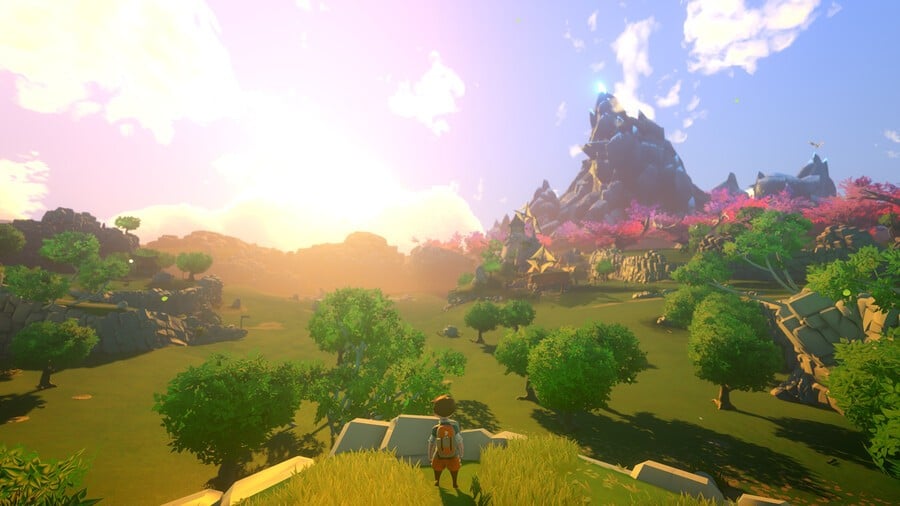
Yonder: The Cloud Catcher Chronicles first caught our eye when it was shown at the PlayStation Experience back in 2016. A colourful project from Prideful Sloth, a small independent studio based in Australia, Yonder's charmed us every time that we've laid our eyes on it. Ahead of its PlayStation 4 release on the 18th July, we caught up with Prideful Sloth's Cheryl Vance and Joel Styles, and quizzed them on what seems to be a very promising title.
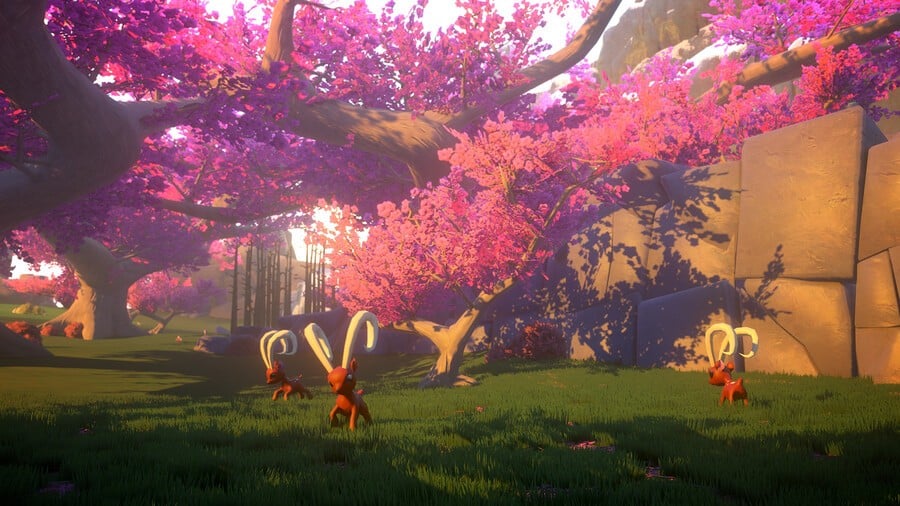
Push Square: To start with, can you briefly explain what Yonder: The Cloud Catcher Chronicles is all about?
Cheryl Vance: Yonder: The Cloud Catcher Chronicles is an open world exploration and adventure game with farming, crafting, fishing, brewing, questing and discovery.
Yonder's already being compared to games like The Legend of Zelda, Animal Crossing, and Harvest Moon. Can you tell us what games inspired you to create Yonder?
Yonder is a game that has been in my head for years. I’ve slowly been revising and honing what exactly it is I wanted it to be. There are so many amazing games that have inspired me in different ways in making Yonder.
Zelda has been an influence, no doubt. I am not sure I know anyone who hasn’t been influenced by Zelda. There are the farming aspects of Yonder inspired by Harvest Moon and Story of Seasons series.
There are other moments, other elements that have been inspired by games you may not expect. Shadow of the Colossus was just amazing for how alive it made the world feel and yet it was so empty. The living, breathing world Team Ico created was fantastic.
The Elder Scrolls and Fallout series for open world exploration.
There is also a love of Japanese RPGs influencing my decisions, including series like Pokémon and Persona, Infinite Space, Dark Cloud, and Final Fantasy Crystal Chronicles: My Life as a King.
Outside of games, there is inspiration from Studio Ghibli. There is also the inspiration from nature; from all the magnificent places where I’ve lived and travelled.
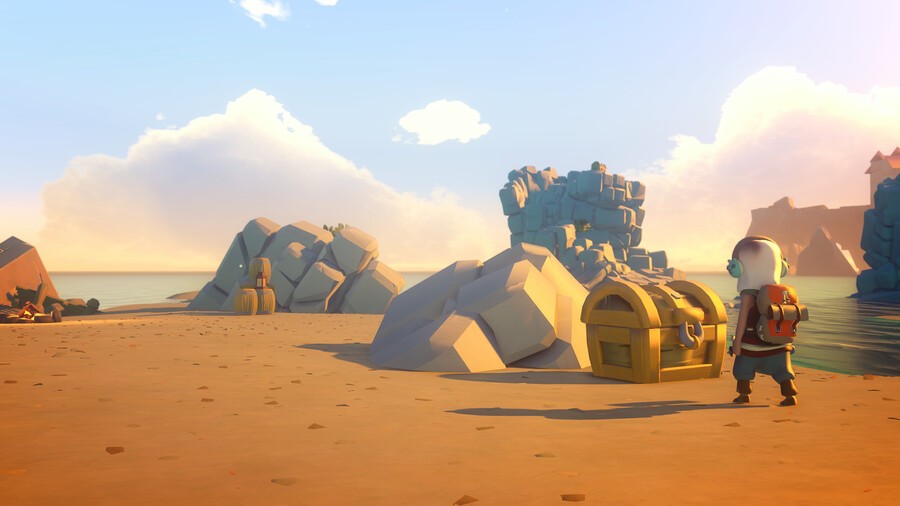
Games like Animal Crossing and Harvest Moon can be seriously addictive. What does Yonder do to keep people playing? Can you eventually run out of things to do, or is there always something to keep you busy?
Is there an unlimited amount of content? No way! Can you find ways to enjoy spending time? Indeed!
We have a meta game in Yonder revolving around area happiness. Has all the murk been removed, have all the trees been planted, is everyone happy. This meta game works to balance the need for resource collection with the overall environmental happiness.
We have also taken the open-world concept which allows the player to do what they want, when they want. We have auto generated quests which you can continue to do.
We have also worked hard to make resource collection satisfying. After a year in development, we load up the game to test something, and 10 minutes later realise we’ve been running around picking things up.
We actually don’t know how much time it takes to do every single thing in the game. I’d love to find out how long it is before someone finds everything!
Accessibility seems to be a key part of Yonder - we hear that it doesn't have any combat, for instance. How important do you think it is for games like Yonder to exist alongside typically challenging titles?
Challenge can come in many forms. I think every game can be challenging in its own way. I can find just as much depth and challenge in chess as I can find in any FPS. I find getting my level 99 gold pineapple to be challenging, too!
I think each person finds different things challenging in different ways. I also find that people have the ability to set their own challenges, too. Can I jetpack jump up to the top of that hill?
What I do see of Yonder is that it is a game that allows you to take the time you want, to do the things you want and do it in a world that is safe and familiar, yet still new and refreshing.
And I do feel that having games like these are very important. We need to expand on the types of games we make if we want to broaden audience appeal and if we want our medium to grow beyond its current reach.
One of the most flattering moments we had demoing Yonder to someone was when they said their perception of what video games are and could be had were changed after seeing Yonder. Those are the important impressions that are vitally important.
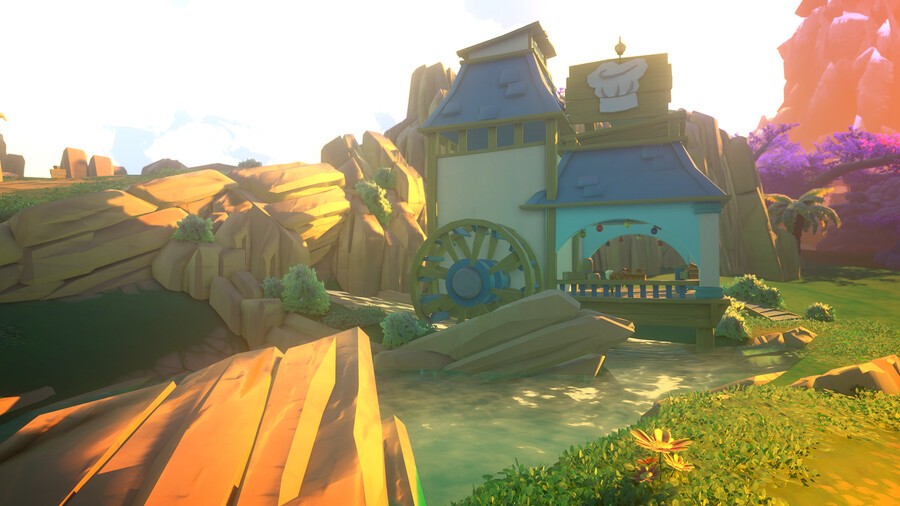
Is there a particular challenge to making a game like Yonder, where players don't have to worry about being killed or seeing a game over screen?
When using systems such as combat, they provide two vital roles. Combat provides pacing. It’s a way to slow down or speed up the player’s movement through an area. Combat, or more so victory in combat, also provides a sense of achievement and a sense of triumph.
So when you look at those two elements you then need to find out how to provide those same outputs, but in different ways.
In Yonder, we used resource collection, questing, farming, crafting and exploration elements to help with pacing. These are things that encourage you to wander, to deviate from a goal you had, and to find a new goal you didn’t know about.
That sense of triumph we took into resource collection. We looked at resource collection as static combat. You are still doing damage to a tree to chop it down. Sure, it doesn’t have a health bar and it doesn’t hit you, but it still requires an amount of hits with the right tool. You also have different animation sets. We have light and heavy animations that come from fighting games. Light hits, heavy hits. You have a standard chop and you have the finishing blow when you fell the tree.
What can you tell us about Yonder's open world? How big is it? Does it have a night and day cycle? Does it have a weather system? Are environments handcrafted, or is there an element of procedural generation?
The world of Yonder takes place on an island kingdom known as Gemea. Early on we decided to strike a balance between a world large enough you can run around in and happily explore (and even get lost in), but condensed enough that it feels alive and rich, without the large spaces of emptiness that some other games commonly suffer from. The aim was to make the most interesting space we could for the player, not necessarily the biggest; having said that, the map is still pretty big - 2km x 2km.
Gemea is like a compressed world – it has eight different regions, all representing different unique biomes with flora and fauna. There’s a beautiful day and night cycle, seasonal cycles, and weather cycles. This stuff isn’t random either - there’s a lot of simulation that goes on in the background; think of a Dungeon Master pairing up weather and environmental conditions with what the player is experiencing.
The world of Gemea is 100% hand crafted – every square inch has had a designer’s touch.
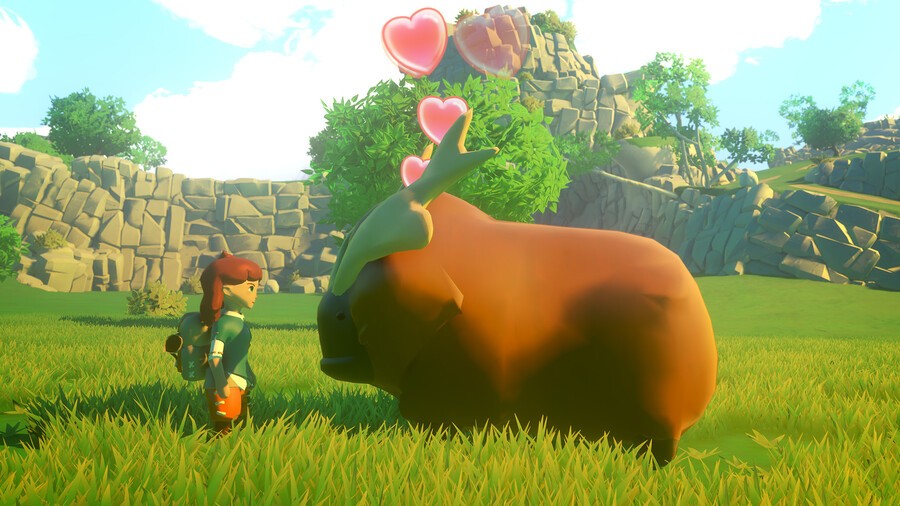
Yonder's got an attractive art style. What kind of look were you going for? Is there a reason why everything looks so cute - especially the animals?
Joel Styles: One of the central pillars of Yonder is to make the world a place you want to be spending time in. An idealism art style fit this idealistic setting... It also allows for great contrast when you need it!
We were a lot more interested in an overall aesthetic and art direction; how the final mood and tone of a scene is represented, and much less interested in fine detailing or how great an individual element looks. This led to a style that simplified mid-frequency details, but really accentuated elements such as strong forms and beautiful lighting.
The animals are a great example of this approach at work; they ooze friendliness. They’re inviting and have personality. But they’re also simple and minimalist in their design. But, come on… who doesn’t want a giant hamster-moose as a new best friend?!
All in all, Yonder seems like quite an ambitious project - especially for an independent studio. Were you ever worried that you were taking on too much?
Cheryl Vance: It is quite ambitious, and we are aware of it. However, we have a team who’ve worked on AAA titles and have experience working on some of the best open-world games in the industry.
We also knew upfront that other people would look at it and call it ambitious. So we started to develop a vertical slice for the game. The vertical slice, as opposed to a prototype, is a more fleshed out version of a final product. We had art style, game flow, and the basis for all our world loading and environment technology in place before we moved into development.
Hindsight always says you could have done something different or better. But I also look at what we’ve accomplished in 14 months with such a small team and I’m proud of us. And I am looking forward to what the future holds.

Sony has worked to bring a lot of independently-developed games to PS4 since the console launched. Can you tell us anything about your relationship with Sony?
We approached Sony early in Yonder’s development of Yonder to secure development kits and get the name of our studio and project in front of them.
The support we’ve had in return from Sony has been fantastic. They were on board with Yonder early on and have provided access and support internally to help us make sure Yonder succeeds.
We have wonderful account reps within America and Europe who have been instrumental in evangelising Yonder internally.
And that belief in our success is very important to us. As a new studio bringing a brand new IP to the world, the support from Sony has made the world of difference for us.
Lastly, can you tell us one especially weird thing about Yonder that we don't know?
We had clay patches in the game we needed to make look less like poo. Then we added poo to the game and it needed to look less like clay patches. In the end, we should have just kept the original clay patch model and used it for the poo!
What are your thoughts on Yonder? Do you like the look of it? Feel free to explore in the comments section below.
[Thanks to Cheryl Vance, Joel Styles, Robert Brown, Zack Furniss, and everyone at Prideful Sloth for making this interview possible]





Comments 7
Kind of reminds me a little big of Herdy Gerdy for the PS2 mixed with Harvest Moon and a little Ni No Kuni. Looks interesting though, will be nice to see a little more about it.
I feel like there's a saminess to so many games lately, going for a Zelda Windwaker look - Rime, that other game I always confuse w/ Rime, even Portal Knights to an extent - and I want to be negative about it, but in a world gone mad, and when so many games are going for post apocalypse zombies, it really is a nice change of pace.
I do wish they would all stop using that same photo - up top - of a guy in a field looking toward a mountain, Witcher 3 already perfected that, and Zelda kind of owns it now.
All I can hear is people banging on about how much "it looks like Zelda" yada yada and dismissing it because of that, anyways, I like the look of this, so depending on the reviews, I'll pick it up
Exactly the kind of games that my wife enjoys. If she hears of this game, I'll never have access to my PS4 again -.-
Looks interesting. I haven't played anything like this since Stardew Valley, so I am really feeling the itch. Games like this are a nice change of pace from guns, swords, mechs and magic spells.
Looking lovely
Looks awesome!
And I may be the only one, but I really don't like Zelda games anymore since Wind Waker...can't play them anymore, they just annoy the crap out of me with their same set up and typical Nintendo bleeps every. Single. Time.
This looks fun!
Tap here to load 7 comments
Leave A Comment
Hold on there, you need to login to post a comment...